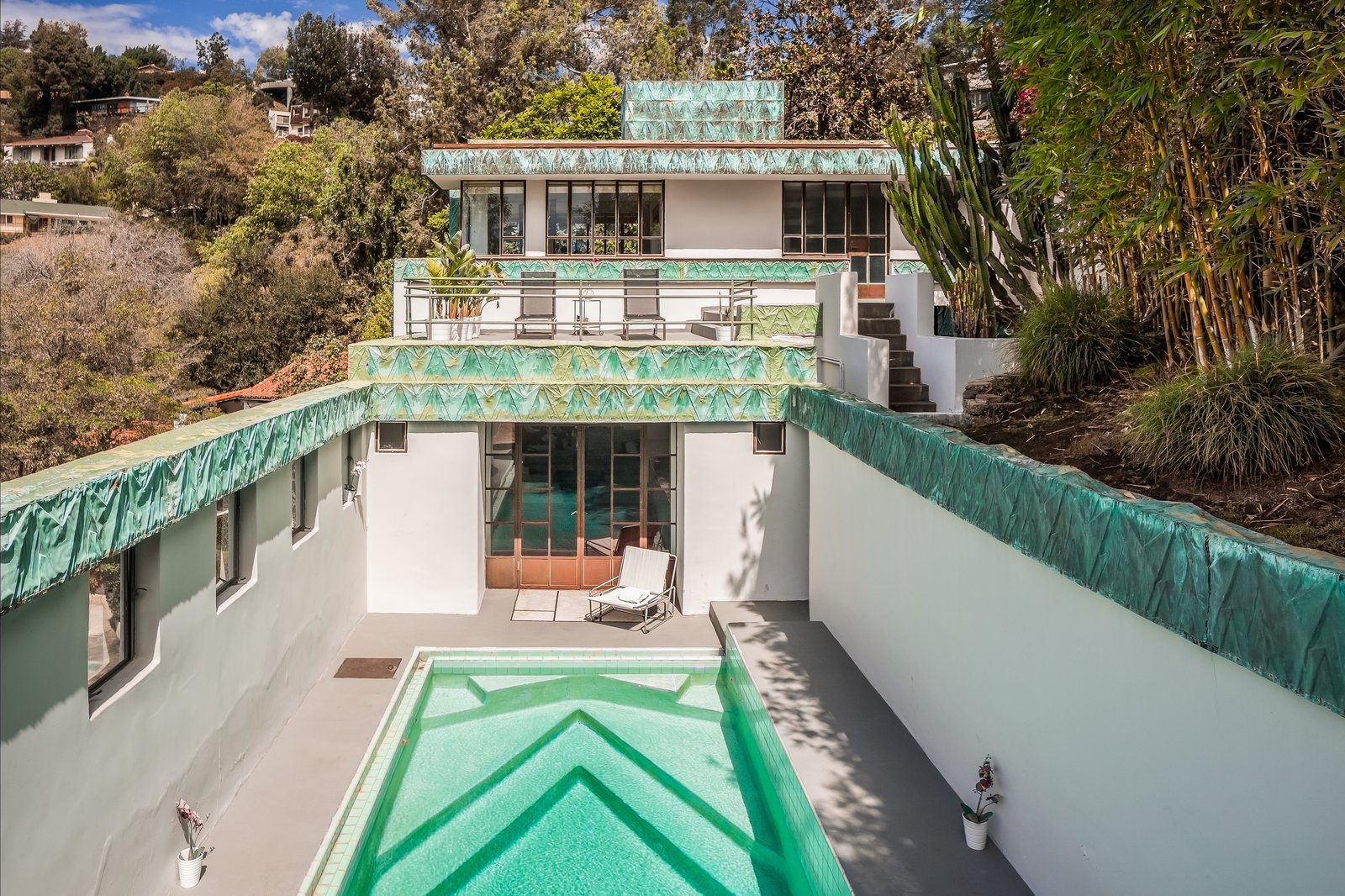#12000. Modernist Villa with Turquoise Facade: A Dialogue Between Architecture and Landscape
This modernist villa demonstrates a striking example of architecture interacting with the natural landscape. Located on hilly terrain, the house organically integrates into the surrounding environment, using a multi-level structure that follows the relief of the site. A particularly expressive facade element is the distinctive turquoise design of roofs and parapets, executed as a wave-like metallic covering with patina.
The architectural composition is built on the contrast between white minimalist walls and expressive horizontal turquoise accents. Large panoramic windows create a connection between internal and external spaces, providing abundant natural light and views of the surrounding landscape. The upper level of the house features an open terrace with metal railings, serving as a transitional zone between architecture and nature.
The lower level is organized around a geometric swimming pool with a characteristic pattern that continues the aesthetic of the house. Clean lines, functionality, and integration with the environment indicate the influence of modernist principles with a slight hint of regional adaptation, possibly with elements of Californian or Mediterranean modernism.
To adapt similar techniques in your own facade design, consider using contrasting horizontal elements to visually expand the space, applying colored accents on architectural details (cornices, parapets), and the thoughtful placement of terraces and open spaces that become an extension of interior rooms. It's also important to consider the context of the site, working with height differences as an advantage rather than a limitation.
